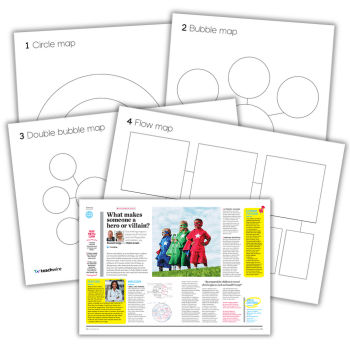7 ways to develop high-quality adult:child interactions in your early years setting

Knowing when and how best to interact with playing children to boost their learning is one of the hardest skills early educators must master. Kathy Brodie has some pointers…

- by Kathy Brodie
- Consultant, trainer, author and founder of Early Years TV Visit website

1 | Pay attention
It can be very difficult in a busy setting to pay full attention when you are talking with children.
However, being in the moment and trying as much as possible to put distractions out of your mind will mean that you are more likely to notice when children use new words, explain their thinking or explore ideas with you.
This is also an ideal situation for sustained shared thinking to take place, where concepts can be extended, problems solved or previous ideas revisited.
Could you use a system to indicate to colleagues that you would prefer not to be disturbed because there is some sustained shared thinking happening?
2 | Time to think
It’s very tempting to have every minute of the day filled with new and exciting activities to occupy children, but they must also have periods of quiet time to think about their experiences, assimilate knowledge and listen carefully to the language around them.
This could be in a quiet den or withdraw area, or it could be simply allowing children to observe quietly from the sidelines. It may be that they are absorbing words, observing social interactions or understanding how to communicate with different types of people as they are watching and listening.
When are children allowed to have quiet activities or able to observe others?
3 | Modelling language
Using different ways to interact with children, instead of asking direct questions, may encourage more sustained interactions.
For example, using a running commentary about what is happening when playing alongside children demonstrates the use of language and sentence structure.
Questioning yourself aloud (“I wonder how many cups I need? I know, I’ll count everyone here.”) demonstrates how to solve problems and gives examples of question structure.
How often do you think aloud when making decisions or interacting with children?
4 | Show your interest
There can be a pressure to ensure that every interaction is recorded or evidenced in some way. Sometimes the best interactions, those that leave a lasting impression with children, are the ones that happen on the spur of the moment.
For example, these could be when you are tidying up or when you are washing hands in the bathroom. Children will know that you are really interested in what they have to say if you value these interactions as much as any others.
How do children know that you value every interaction with them?
5 | Work with home
The home learning environment is a critical element of children’s language and communication experiences. For example, the number of different words children hear in their homes, and the complexity of the language, will greatly affect children’s own language development.
Collaborating with parents to encourage them to talk with their children at every opportunity – from walking to the setting, to discussions whilst shopping and reading together at bedtime – can improve the amount and quality of the interactions that children have.
How often do you discuss language development with parents?
6 | Have fun!
Quality interactions are more likely to occur if there is a culture within the setting for enjoying talking with children and having fun with language – for example, encouraging jokes and making up words and songs.
This can be as planned activities or simply supported and encouraged when it happens spontaneously.
When was the last time you had fun with words, making up new words or finding the made-up words in Roald Dahl’s books?
7 | Shared experiences
Sometimes the best-quality interactions are those that don’t involve language at all. This could be when you are watching a worm make its way across the path or when you are mixing playdough together.
The importance of knowing that someone else is thinking about the same thing is communicated by simply having joint, shared interaction, using eye contact and gestures.
Where would these types of interactions be the most effective in your setting?
Listen and learn
Some of the best-quality interactions are between children themselves…
- Don’t underestimate the importance of peer interactions, especially if you have children who are shy or reluctant speakers with adults.
- Encourage children to collaborate together on projects rather than taking over – it may well lead to unexpected and interesting solutions that you haven’t thought about.
- Allow children opportunities to appreciate that there may be different styles of speech for different circumstances and audiences; for example, they may use different language when talking with their friends rather than with adults.
- How many observations do you have of children talking between themselves?
Kathy Brodie is an Early Years Professional and trainer based in East Cheshire. Her new book, The Holistic Care and Development of Children from Birth to Three: An Essential Guide for Students and Practitioners (Routledge, £21.99), is available now.










